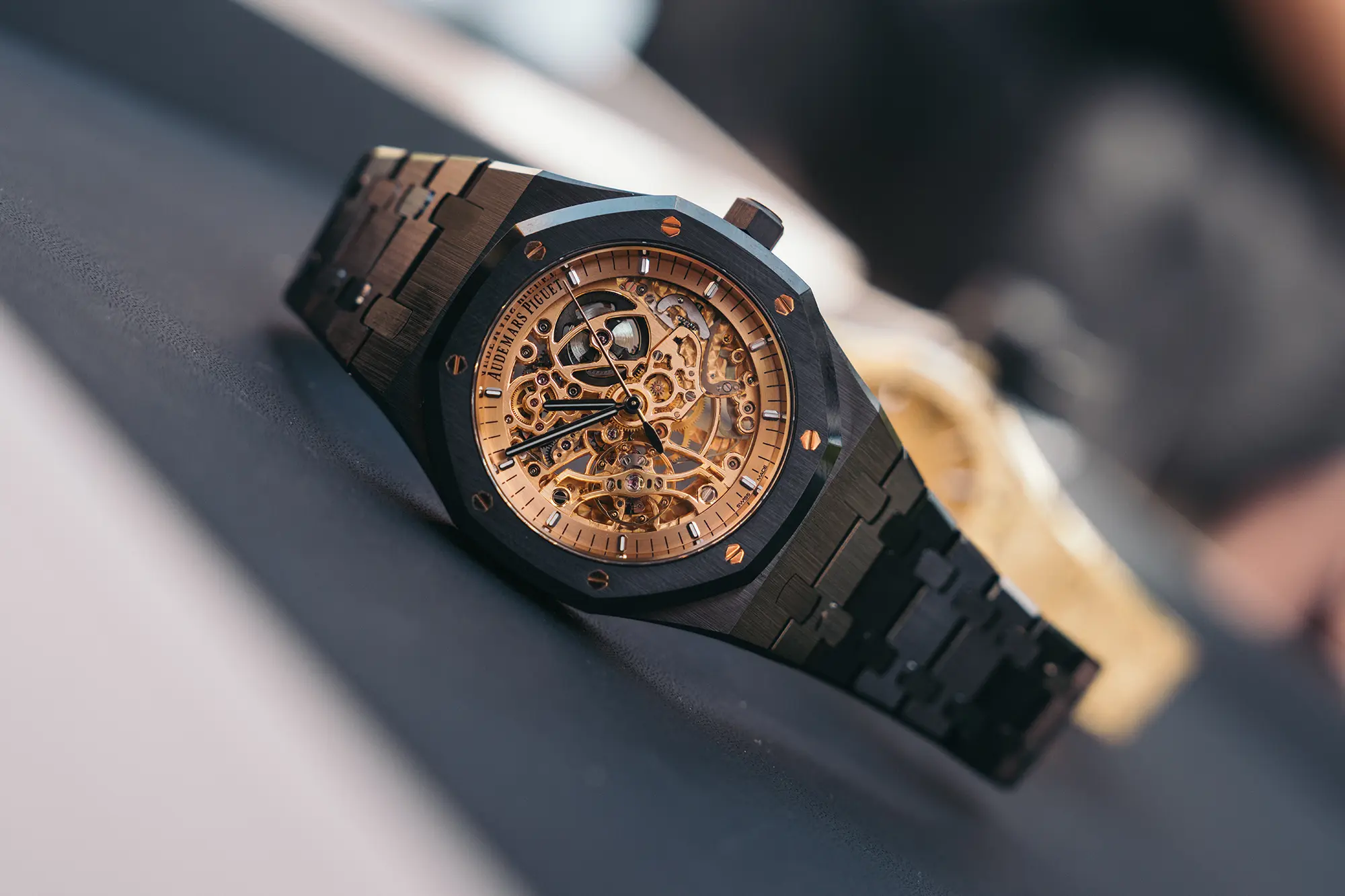Earlier this year, Audemars Piguet further fleshed out the Double Balance Wheel Openworked portion of the Royal Oak collection. The watch is something of a flagship for the time-only Royal Oak references, showcasing the caliber 3132 and its unique double balance wheel configuration, and fully openworked dial. The word ‘openworked’ gets thrown around quite a bit these days, often meaning an open dial plate that reveals a rather unremarkable view to the movement’s mainplate. That is decidedly not the case here. There’s more to this watch than its somewhat ostentatious presentation, though, and that is the other part of its name: the double balance wheel.
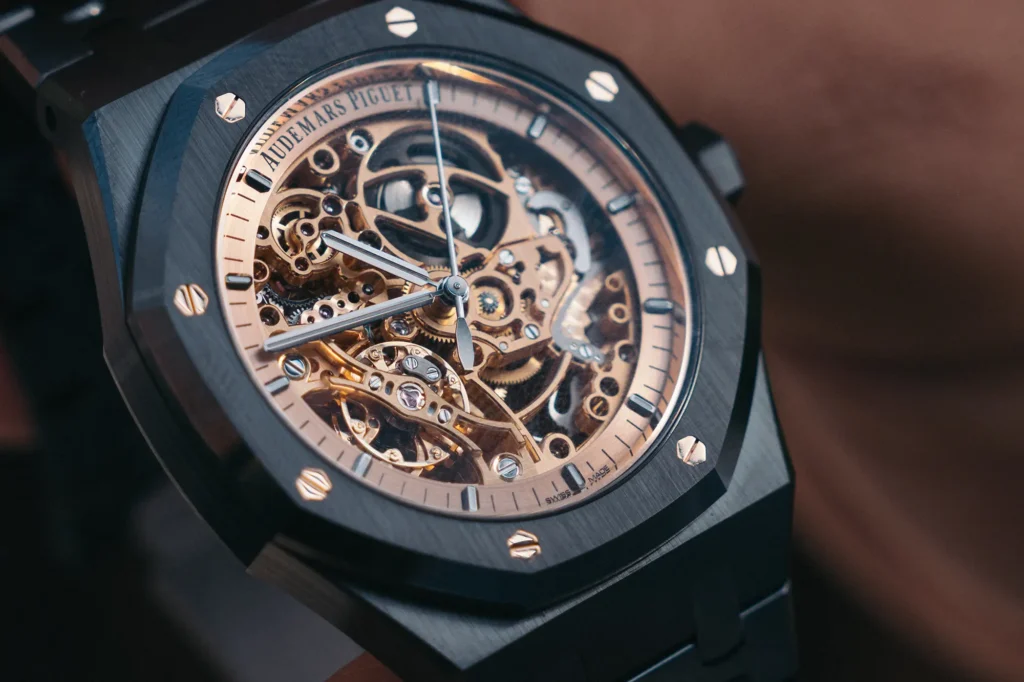
The Royal Oak Double Balance Wheel Openworked made its debut in 2016 with the reference 15407, effectively combining two ideas that the brand had been developing in other ways over the previous generation. Of course, the openworked dial is nothing new to the Royal Oak collection, and the brand has even made use of dual balance springs in the past, but here, Audemars Piguet have brought these concepts together in an entirely new way. The result is quite visually dramatic, as you can see, and the idea of the double balance wheel provides an innovative way to provide stability within the regulating organ of the movement.
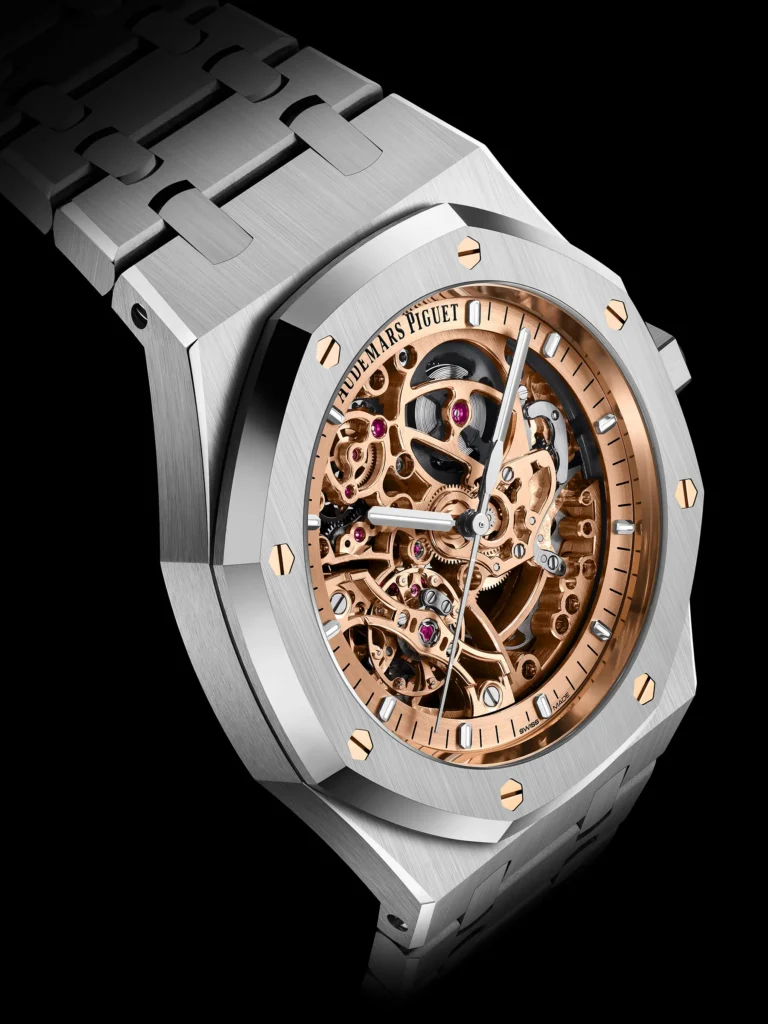
Before we get into the double balance wheel as executed by Audemars Piguet, let’s take a step back and look at the problem this is attempting to address. A typical balance wheel beats 28,800 times per hour, which means it oscillates 4 times every second. This creates 8 micro-oscillations or vibrations each second, which manifest through the fourth wheel of the gear train powering the running seconds hand, and can be observed as the small ticks visible with a close look. 28,000vph, or 4Hz, is common, but not universal. High frequency movements beat faster (sometimes much faster) as a way to smooth out variations or errors incurred from use, but do so at the expense of reliability.
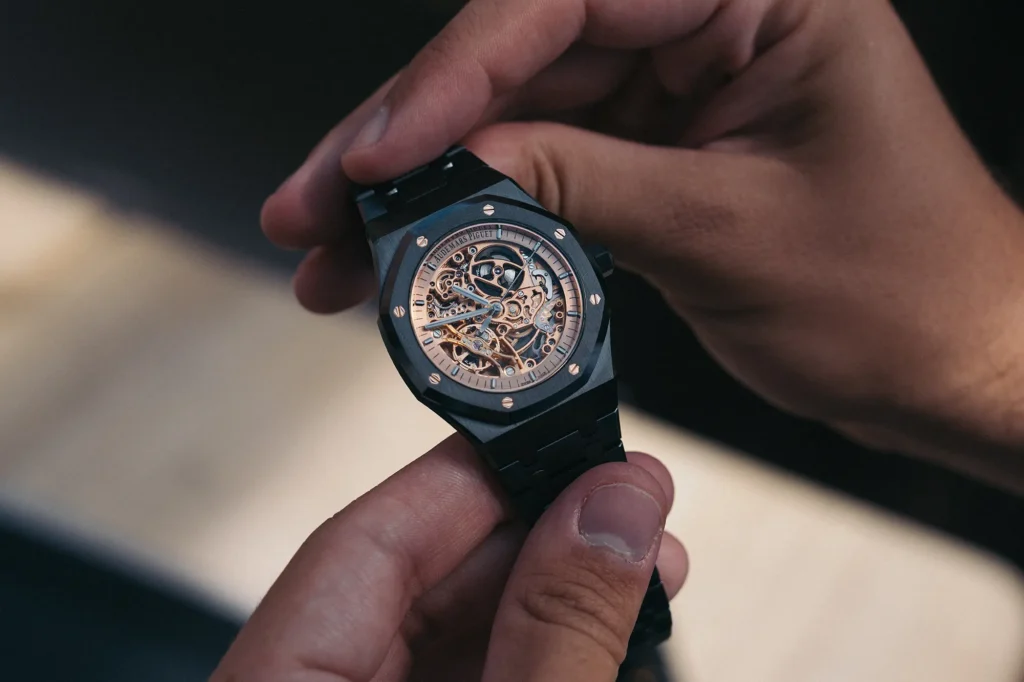
The El Primero is a well known higher frequency movement, beating at 36,600vph, or 5Hz, allowing it to time things with a greater level of precision (if not accuracy). Its seconds hand makes 10 ticks between each second, which is why Zenith’s chronograph watches are listed as 1/10th of a second chronographs. When Rolex used the El Primero in the Daytona in the reference 16520, one of the modifications it made was to slow the beat rate down 28,800vph to make it more reliable over the long haul. Faster movement means more stress on all the parts within the escapement, notably the jewels in the palette fork, and where they make contact with the escape wheel, not to mention more rotational stress on the hairspring, the balance staff, and its pivot points within the balance bridge.
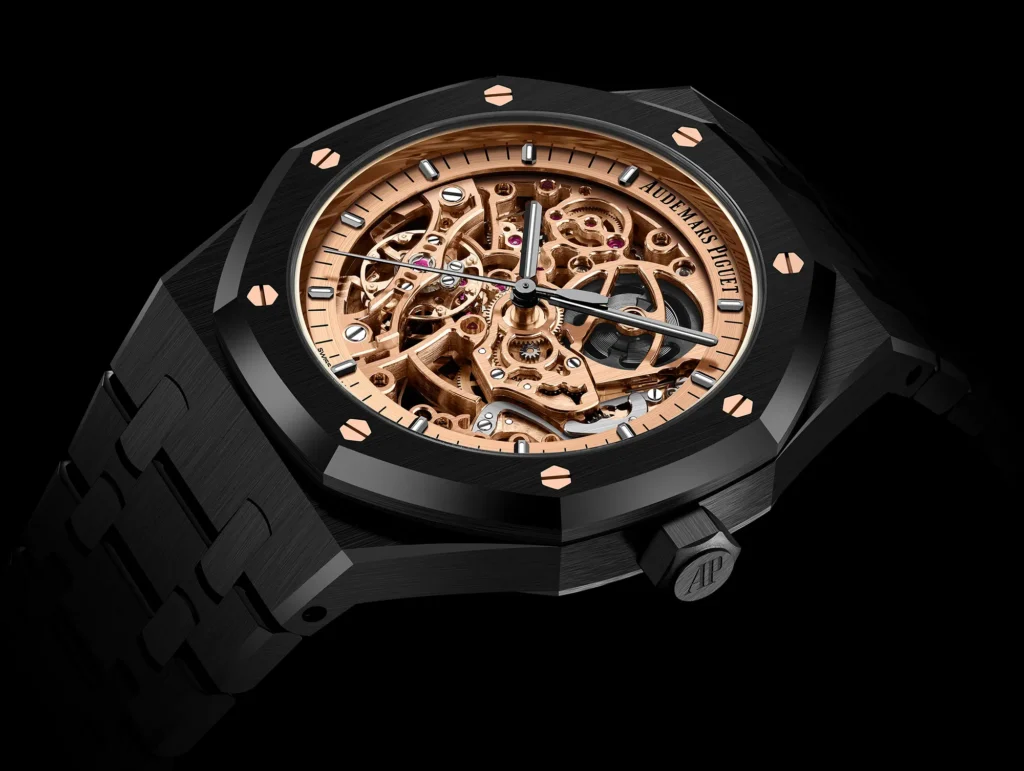
So what does all this have to do with the size (and number) of balance wheels? Well, a balance works best when it’s operating consistently. This means stability is a big deal, and stability to the inertia of a free-spring balance wheel is added via small weights or screws which can bring poise to the balance. One solution to providing consistent stability to the balance is to increase the diameter of the balance wheel itself, which is often seen in old-school marine chronometers mounted inside of maritime vessels. The larger balance wheel would beat slower, but stability was gained. One isn’t necessarily better than the other, and in fact, modern materials have allowed for more stable high beat movements to be produced, however there is always a tradeoff being made between size and speed.
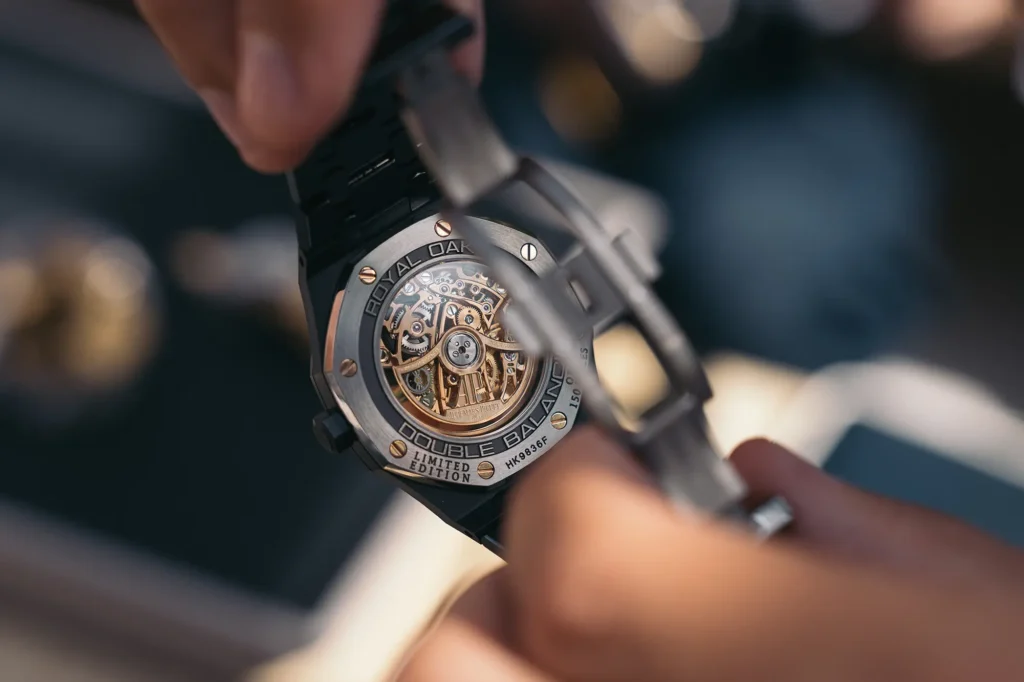
Getting back to this Royal Oak, Audemars Piguet have placed two balance wheels, each with their own hairspring, into two ends of a single balance staff, with the escape wheel residing between the two. This means that the balance wheels can be small in diameter, but have the benefit of a much more stable system thanks to the added mass. The added heft means it beats at a slower rate of 3Hz.
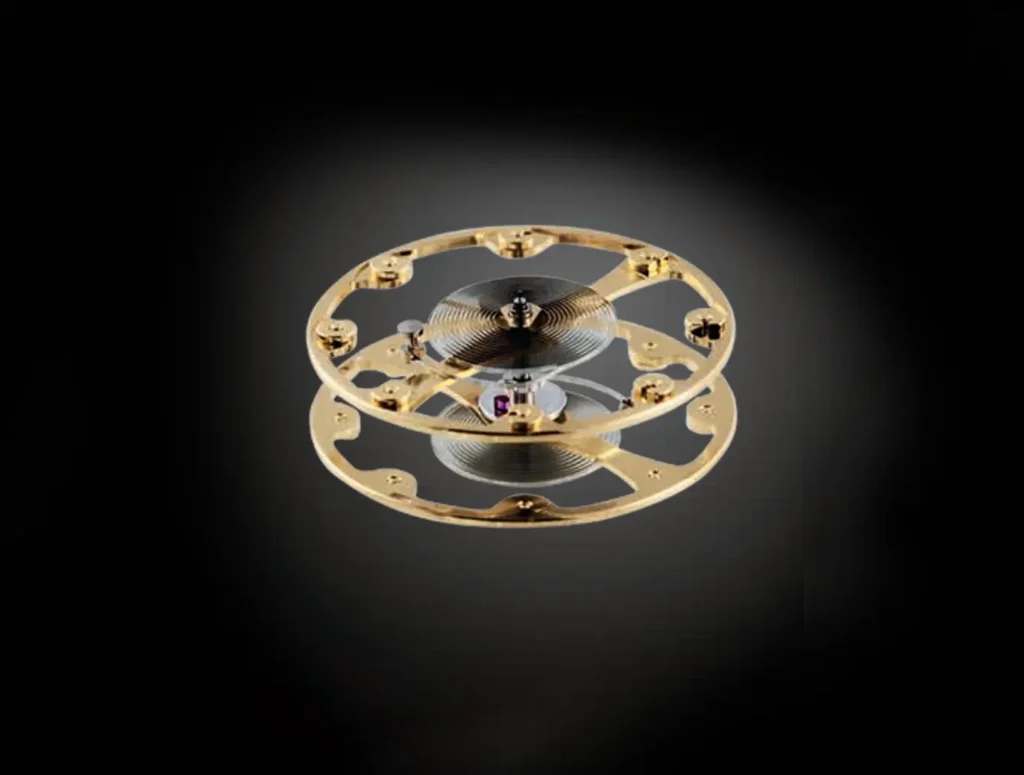
What AP has done is provide a stable, high inertia balance without taking up additional space within the movement itself. Plus, you know, it looks really cool. What’s the net benefit to the timekeeping abilities of the watch? That part is less clear, with AP stating this this movement should be approximately 30% more accurate than other similar movements without this system. In the real world, that likely means a few seconds per day, at best. Not too bad, though it would be nice to see innovations like this receive third party chronometer certification.
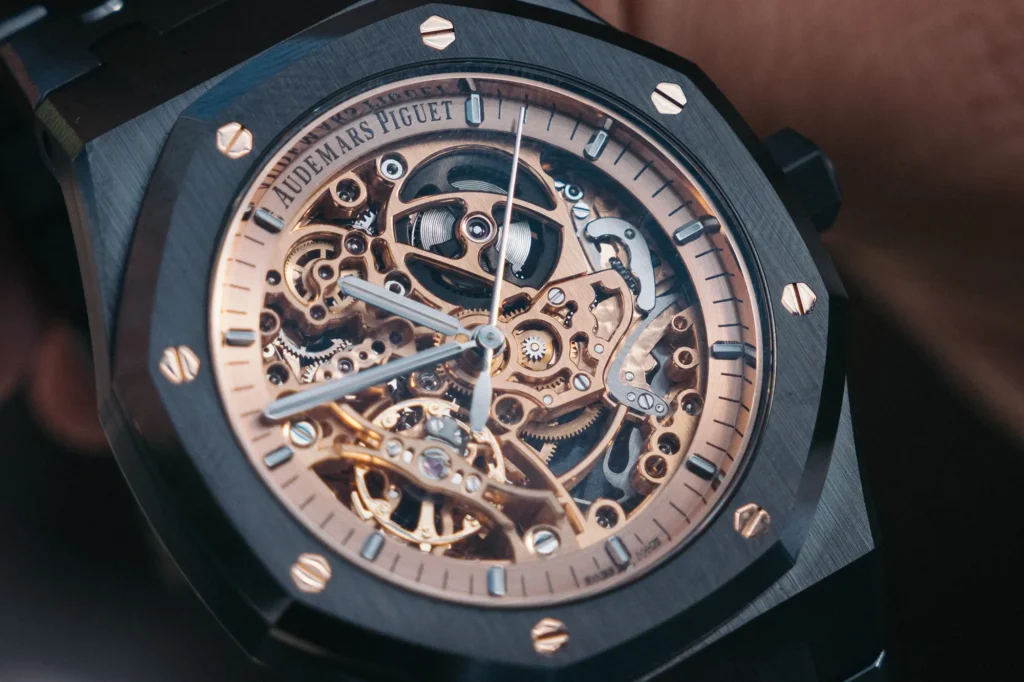
At the end of the day, the double balance wheel part of this watch is a neat detail, but not the driving force behind attracting buyers. That comes down to factors that are likely far less interesting, which I won’t speculate on here. The watch as a whole is quite beautiful in its finish and construction, as you’d likely expect from Audemars Piguet, or any watch priced at CHF 88,000 for that matter. As interesting as I find this movement, both aesthetically and horologically, I personally find something like the simple 15202 more compelling as a watch I’d wear and use.
This example features a black ceramic case and bracelet with a pink gold toned movement and matching bezel screws. The case measures 41mm in diameter, and just under 10mm in thickness. Somehow, it feels a bit chunkier than that on the wrist, which I chalk up to the highly angular case. This is an impressively light watch, but never feels plastic-y or ‘too light’, which is a fine balance to walk when considering materials like this.

Overall this is a stunning watch in person, and the dial is the true star of the show. The dial and movement become one, and offer an equally incredible view from the front and the back. It’s a bit like a Lamborghini in that it has a huge personality and presence, with plenty of noise under the hood to back it up. Maybe not so practical, but as far as the experience is concerned, the Double Balance Wheel Openworked Royal Oak has that down in spades. Audemars Piguet

